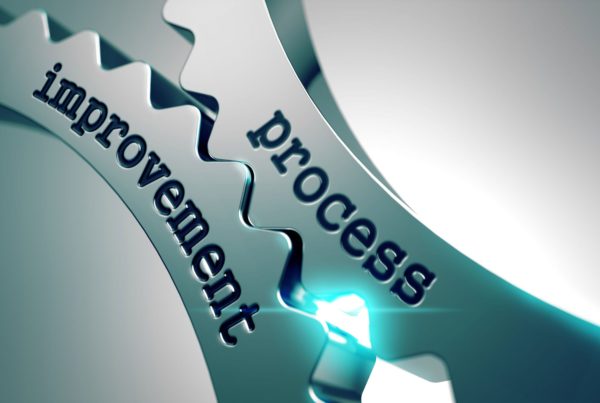Teamwork makes the dream work! While straight through processing is the most productive method of process design, current work from home practices have really thrown a wrench into the process. In these work from home times, it is challenging to identify what is happening in the business as many are working remotely without the regular visual queues of processes being completed. Further compounding this issue is the fact that many employees are working irregular hours (some have gone so far as to say this is the death of the 9 – 5). To ensure your team stays productive while remote I have highlighted my top five requirements for effective Work From Home (WFH) Process Design:
-
Have defined roles and accountabilities
Whether you are in an office or working remote, the most critical element of any process is the understanding of who is responsible for each part of the process. A useful tool to ensure this is the case is the RACI Matrix – which stands for Responsible, Accountable, Consulted, and Informed. This matrix is a simple, yet effective, tool to communicate who is playing which part in each of the process steps. Using this tool eliminates any confusion about who is responsible for what, thus ensuring tasks are completed in a timely and efficient manner.
- R – Responsible: Those listed as responsible for the task are the ones who are directly working on it.
- A – Accountable: There is only ever one person who is Accountable for each activity. The person who is accountable is the individual who answers to the activity/decision. This person ultimately determines the pass/fail of the deliverable.
- C – Consulted: Those listed as Consulted are your subject-matter experts, whose opinions and inputs are required for the deliverable.
- I – Informed: Informed individuals are those requiring a status update or progress check on the deliverable or task.
Once you have created your RACI matrix you may notice that there are requirements from other teams. Work to simplify the reporting structure so that team members are reporting to a single department who has full knowledge of their activities in order to effectively manage the individuals time and priorities.
Decide and Commit
“The first rule is if you see a snake, don’t call committees, don’t call your buddies, don’t form a team, don’t get a meeting together, just kill the snake.
The second rule is don’t go back and play with dead snakes. Too many people waste too much time on decisions that have already been made.
And the third rule of snakes is: all opportunities start out looking like snakes.” – Ben Horowitz
-
Define what the outcome will look like (have the work broken into manageable pieces)
Once you have a clear understanding of who is playing each part in the process from your RACI matrix, it is critical to outline what “good” and “done” looks like. This can be accomplished by providing all the necessary requirements for the task at the outset of the assignment of work.
A great tool for ensuring this is complete is to provide a template or even a sample of past work. Also, it will be critical to ensure that as much of a task can be completed uninterrupted by a single individual without unnecessary input from others. When a task is broken into multiple unnecessary steps that require several revisions from outside contributors, the process will often get caught in a whirlpool of indecision.
It should be clearly thought out how has the approval of the outcome of the process, and how many revisions that the process can go through before the process is executed.
-
Determine the timeline for completing the work
An easy way to spot the eddies of confusion and lack of accountabilities from the previous process is to have a timeline of when work will advance from one phase to the next. The critical element here is that the timeline is written down. Many in organizations often assume that the timeline is well understood, but without written proof there can be no variance tracking (and often results in precious time spent finger pointing in meetings).
There needs to be a black and white when it comes to deadlines. This means that there is a day and time when the work will be ready for the next step. A simple tool could be a shared calendar or an Excel Spreadsheet with three columns: assigned date, due date, and completed date. A Kanban Board is an effective Lean tool that can also be used in this situation, just don’t forget to have the deadline recorded on each task.
-
Know who gets the work next – Have visual queues of work (not email)
This may sound simple, but one of the most frequently overlooked aspects of WFH productivity is notifying the right stakeholders when the torch is being passed. In our over emailed world, many are using productivity hacks such as checking email once a day, so there needs to be a clearly defined handover of work or a central queue where team members can look at what is next in the queue to complete the process. Work should be managed effectively with the Lean Management Principle of FIFO (First In First Out) to avoid the backlog of work and customer service challenges.
One tool that we really enjoy at Propel is Trello – which allows you to create a team board which creates a visual indication of work.
-
Regularly scheduled check Ins
To bring it all together and to eliminate roadblocks for your team members it is critical to host a full team meeting with a regular frequency at a scheduled time. By having this consistently scheduled meeting you will bring some regularity to your team during this highly irregular time as well as allow them to plan to bring their issues to the team to deal with.
Many teams will spend as much as 15% of their total available work time scheduling or rescheduling meetings. Install a culture of accountability with your team and stick to the time. During this team meeting, the same Agenda can be used each time with team members reporting on: Results since the last meeting, upcoming schedule or work activities, issues that are preventing them from proceeding.
By allowing the whole team to be on the call at the same time they will be able to balance their own capacity of the work requirements.
To bring it all together I would start with the glue of the process, which is a regular all team member meeting held consistently (at minimum once a week) to ensure all team members are up to speed. Next, work your way from the top. Start by mapping your team’s process and assigning the RACI chart to each task, then decide on the templates or what done looks like. Finally, decide how you will track the progress of the work and what online visual tools you can use.
At Propel we are dedicated to passing on tools and tricks to create workplaces that work, we are always happy to discuss your specific challenges and learn how you put these tools into action.
Contact us today at [email protected] or 604.346.5185.








